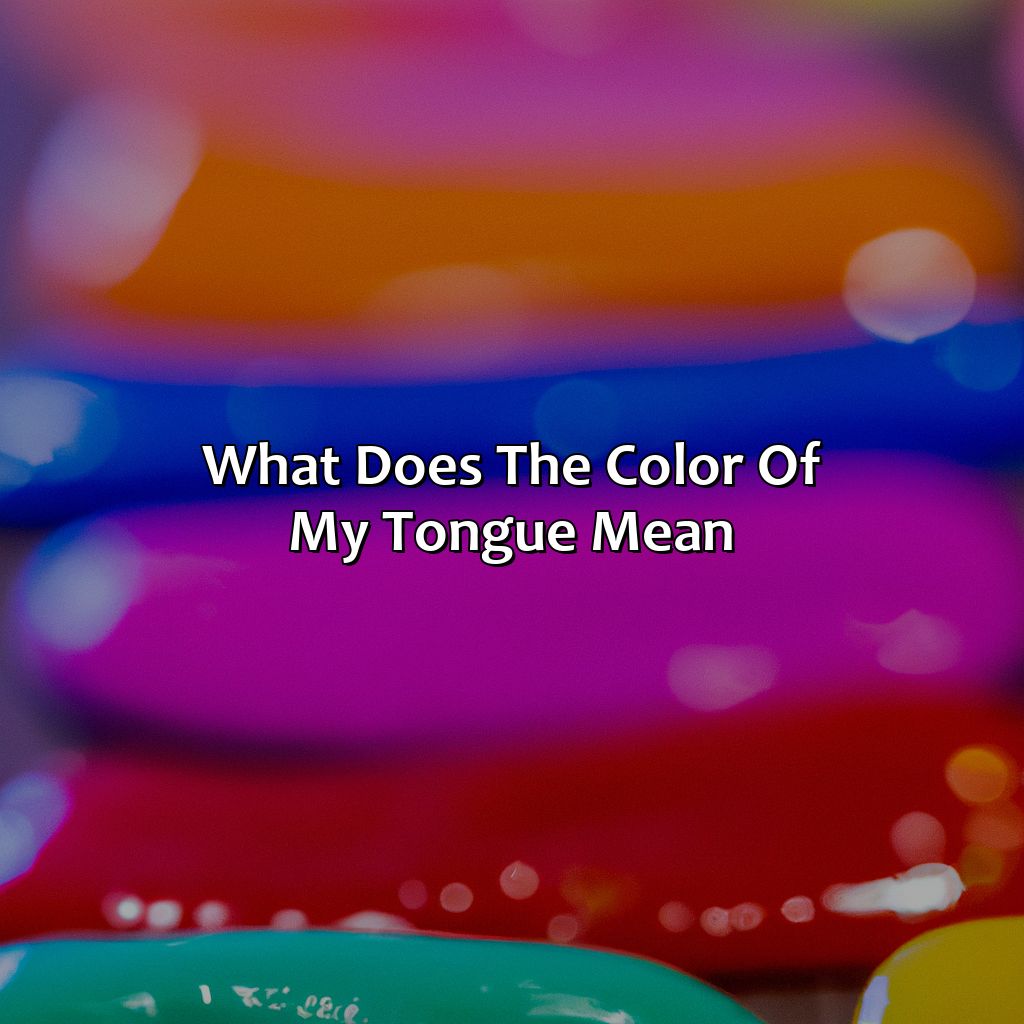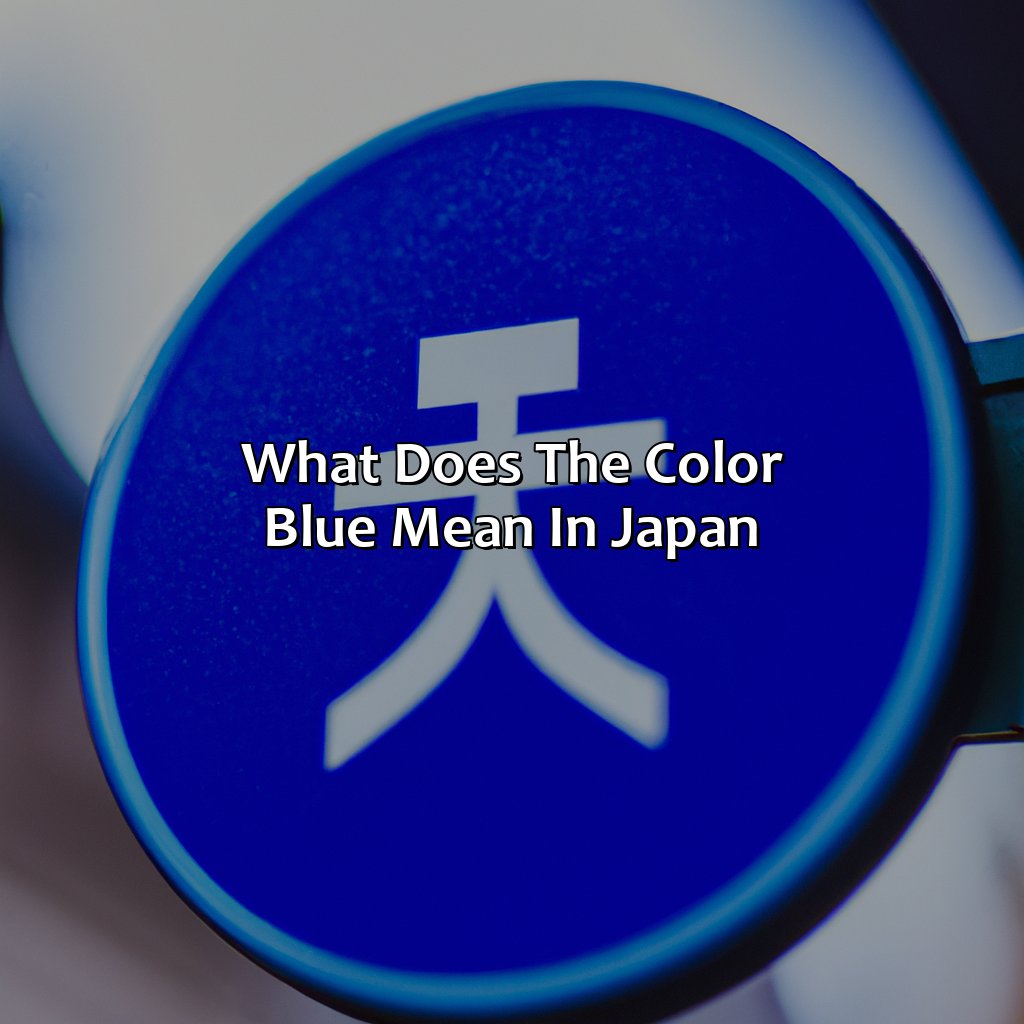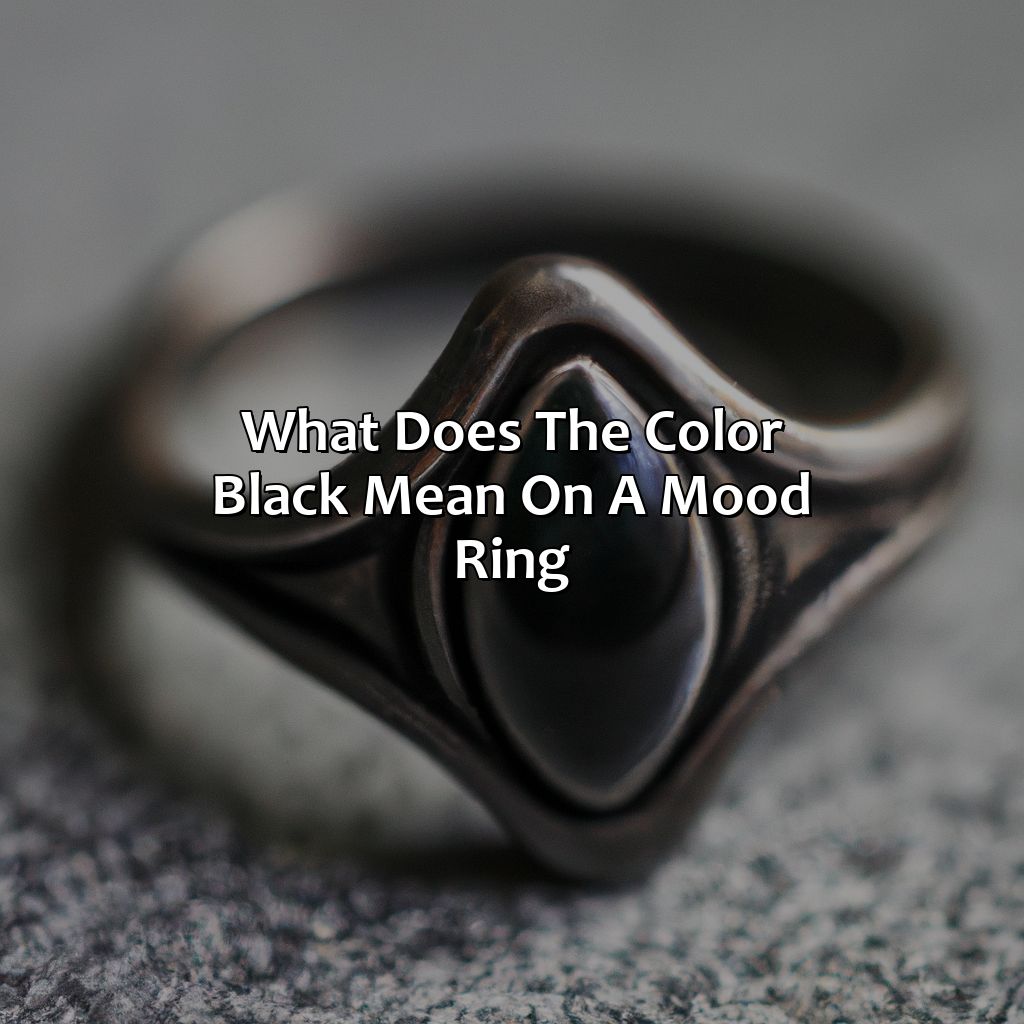Key Takeaway:
- The color of your tongue can indicate your tongue health: The color of your tongue can vary from pink to white, yellow, red, or even black. Changes in your tongue’s color can indicate an underlying health condition or poor oral hygiene practices.
- Factors affecting tongue color include dehydration, medication side effects, smoking and tobacco use, and nutritional deficiencies: Being aware of these factors and taking the necessary steps to address them can help you maintain a healthy tongue color and oral hygiene practices.
- Home remedies and proper oral hygiene can prevent tongue discoloration: Proper brushing, flossing, and tongue scraping can go a long way in preventing tongue discoloration. Incorporating healthy lifestyle practices, such as staying hydrated and eating a balanced diet, can also contribute to a healthy tongue color.
Understanding the Meaning of Tongue Color
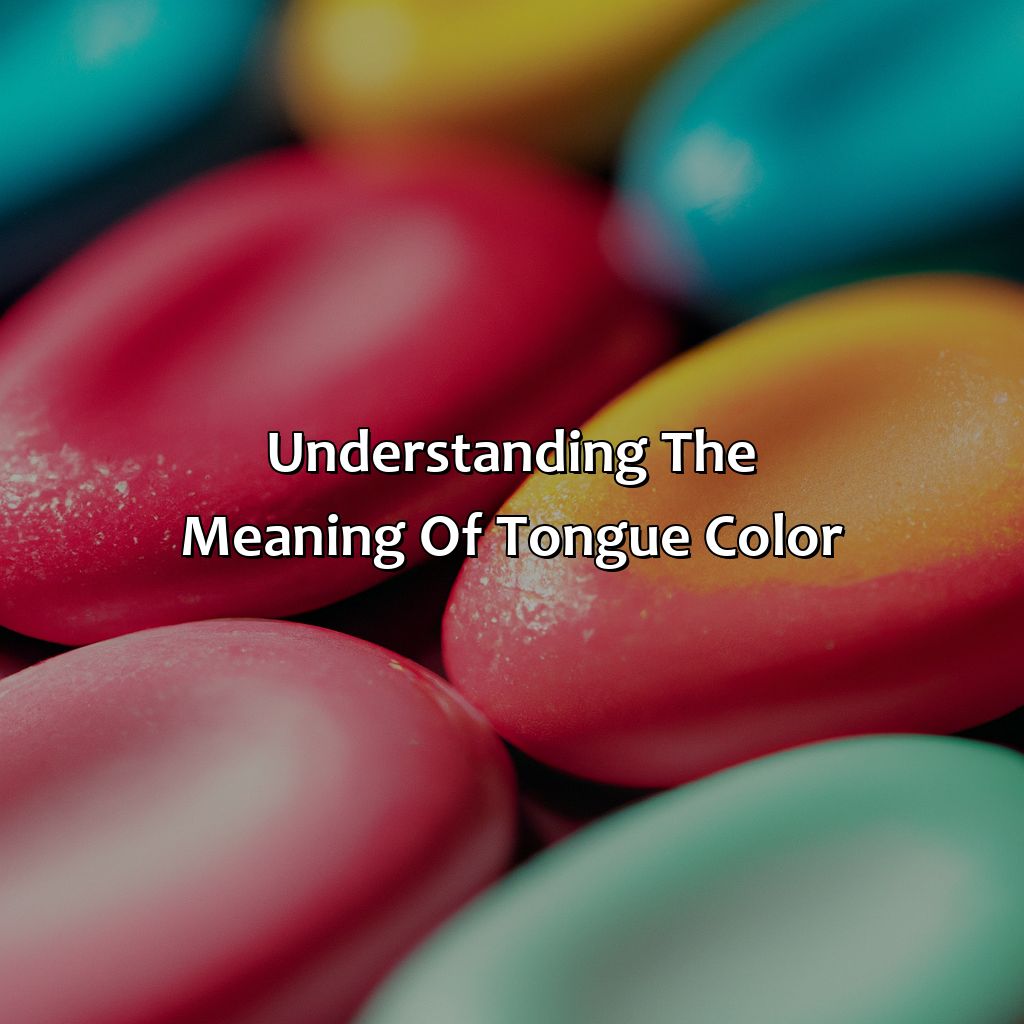
Photo Credits: colorscombo.com by Sean Nguyen
Know the importance of tongue color! What causes tongue discoloration? Explore the sub-sections to understand. Discoloration of the tongue can be a sign of health issues. Maintaining good tongue health is very important for health and well-being.
What Causes Tongue Discoloration
The color of our tongue is an indicator of overall health, and tongue discoloration can be caused by various factors. Some common causes include dehydration, medication side effects, smoking or tobacco use, and nutritional deficiencies. The presence of a white coating on the tongue indicates fungal or bacterial infections, while a yellow tongue could be due to liver dysfunction or jaundice. An inflamed, red tongue may suggest an allergic reaction or nutrient deficiencies. Black hairy tongue is caused by overgrown papillae on the tongue’s surface. Regular dental checkups and proper oral hygiene practices can prevent many instances of tongue discoloration. Pro Tip: Regularly examine the color of your tongue to diagnose and treat any underlying health issues early on.
Neglecting tongue health can lead to a colorful array of problems, but keeping it in check may help avoid a black hairy situation.
The Importance of Tongue Health
Maintaining tongue health is crucial for overall oral and general health. The tongue is an indicator of various health conditions, and discoloration may indicate an underlying issue. It is essential to maintain proper oral hygiene, consume a balanced diet, and limit tobacco use to prevent adverse effects on tongue health. Neglecting tongue care may lead to infections, inflammation, and unpleasant breath odor.
Keep the tongue clean and seek medical attention if abnormal color persists. Pay attention to your tongue health for early detection of any potential health issues.
Your tongue may change color faster than a chameleon on a rainbow.
Factors Affecting Tongue Color

Photo Credits: colorscombo.com by Jeffrey Thompson
Gain insight into your health – understand Factors Affecting Tongue Color! Dehydration, medication side effects, smoking and tobacco use, and nutritional deficiencies can all create a strange hue. When your tongue changes color, it could be a sign of a health problem. Be aware of the causes and the consequences to take the right steps to stay healthy.
Dehydration
Lack of fluids in the body can have a significant impact on the color of your tongue. This occurs due to dehydration, which happens when your body loses more fluids than it takes in. It is a common problem among people who do not drink enough water or consume excessive amounts of caffeine and alcohol.
Dehydration affects the color of your tongue by making it appear dry, pale, and sometimes yellowish. The saliva production decreases during dehydration, resulting in the development of the white coating on the tongue that indicates poor oral health.
Along with discoloration of the tongue, dehydration can cause other symptoms such as dry mouth, bad breath, and even difficulty swallowing. To prevent dehydration from affecting your overall health including tongue appearance and hygiene, make sure to intake enough fluids like water daily.
Staying hydrated by drinking water throughout the day and limiting consumption of caffeine and alcohol helps combat this issue effectively. By keeping up with appropriate intake levels, you can maintain good oral hygiene as well as reduce risk for a multitude of health issues that stem from dehydration.
Don’t let your medication change your tongue’s fashion statement.
Medication Side Effects
Medication’s impact on tongue color is a known side effect that can be concerning to some individuals. Certain prescribed medications have been shown to discolor the tongue, changing its natural pink hue to various shades of white, yellow, or black. The blemished appearance is temporary and tends to go away once the medication has been completed.
The change in the tongue’s color due to medication can be attributed to how drugs are absorbed by the body and reach different parts of it, including saliva production and glands in the mouth that nourish the tongue. The saliva’s composition is altered because of medication consumption, manifesting in changes in texture and color of the tongue.
It should be noted that not all medications lead to a change in the colour of your tongue. Even if coloration occurs, it is typically not dangerous, as long as there aren’t any other associated symptoms. If you are concerned with such symptom combination – discolored tongues along with other warning signals like sore mouth or throat inflammation – contact a healthcare provider for medical recommendations.
A true fact from healthline.com states long-term use of antibiotics could open up future risks for infections caused by drug-resistant bacteria.
Turns out smoking isn’t just bad for your lungs, it can also give your tongue a lovely yellow tint.
Smoking and Tobacco Use
Smoking and tobacco consumption can lead to discoloration of the tongue. Nicotine stains the tongue with a brown or yellow tint, while smoking irritates the taste buds and causes inflammation. Furthermore, tobacco use increases the risk of developing oral cancer.
To avoid discoloration caused by smoking and tobacco use, the best solution is to quit these habits altogether. However, if quitting is not possible, it is important to maintain good oral hygiene by brushing twice a day and using mouthwash regularly.
Additionally, staying hydrated can reduce tongue staining as it aids in flushing toxins out of the body. Consuming foods rich in vitamin C can also help combat inflammation caused by smoking.
In summary, smoking and tobacco use are significant factors that affect tongue color in negative ways. Therefore, taking steps towards quitting these habits or maintaining good oral hygiene and consuming healthy foods can help prevent discoloration of the tongue.
Your tongue might turn into a rainbow if you don’t keep up with your nutritional deficiencies.
Nutritional Deficiencies
Lack of essential nutrients in the body can lead to changes in tongue color. When there are insufficient vitamins, minerals or other vital nutrients in the diet, it can result in nutritional deficiencies that could affect the tongue. An unhealthy diet that lacks essential nutrients can cause the tongue to become discolored.
Nutritional deficiencies can manifest as a red, swollen and painful tongue with a smooth appearance. A deficiency in vitamin B12, folic acid and iron is commonly associated with a pale or whitish tongue color. On the other hand, a darkened or blackened color on the surface of the tongue may indicate a lack of zinc, vitamin B-complex and other trace minerals.
It’s important to note that these deficiencies aren’t necessarily caused by what you eat but also by your body’s ability to absorb certain nutrient from food. Nutritional disorders like anemia caused by mineral deficiency can lead to discoloration of the tongue as well.
Furthermore, when nutritional deficiencies cause discoloration of the tongue it could be one of several ways it shows itself so it is important not to self-diagnose, rather speak with medical healthcare professionals.
Research has proven that malnutrition and deficiencies have an overall negative effect on oral health through weakened protective mechanisms leading to inflammation whilst impairing wound healing during injury.
Your tongue color can reveal more about your health than you think, from normal pink to black hairy – it’s like a mood ring for your mouth.
Different Tongue Colors and Their Meanings
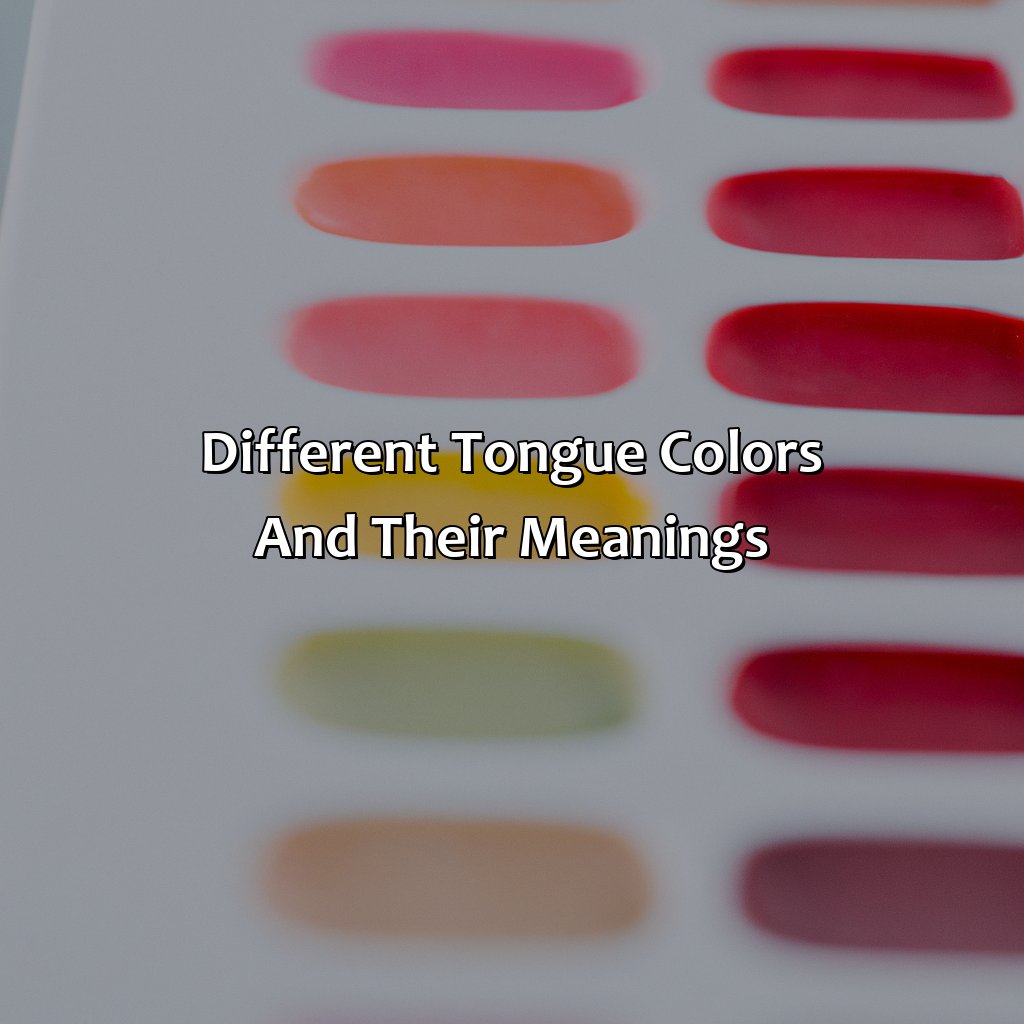
Photo Credits: colorscombo.com by Vincent Scott
This section is designed to help you understand the various meanings of tongue colors. Sub-sections include:
- Normal Pink Shade
- White Coating
- Yellow Tongue
- Red, Inflamed Tongue
- Black Hairy Tongue
Each one explains why a tongue may be a certain color and its potential health implications.
Normal Pink Shade
The color of a healthy tongue is typically pink, with a smooth texture and no visible coating. This is called a normal tongue color. A deviation from this shade may indicate an underlying medical condition or lifestyle factor that needs to be addressed.
A normal pink tongue indicates good oral health and proper hydration. It means that the tongue is free from inflammation, infection, or other issues. Additionally, good oral hygiene practices like brushing and flossing help maintain a normal tongue color.
Other factors that may affect the appearance of the tongue include dehydration, smoking, medication side effects or nutritional deficiencies. These can disrupt the balance of bacteria on the surface of the tongue and lead to discoloration.
It is important to note that some people naturally have variations in their tongue color due to genetic factors. However, any sudden changes or abnormalities should be evaluated by a medical professional.
Pro Tip: Make sure to drink enough water throughout the day to stay properly hydrated and maintain a healthy tongue color.
Your white tongue may be a sign of poor oral hygiene, but at least it matches your shirt.
White Coating
A white coating on the tongue is a common issue that can indicate several health conditions. The condition occurs as a result of excess debris or bacteria accumulated on the tongue’s surface, causing it to appear coated with a white film. Poor oral hygiene, dehydration, and mouth breathing can contribute to this condition’s development.
If left untreated, a white tongue coating may be an indication of an oral yeast infection or even oral thrush resulting from excessive use of antibiotics leading to the overgrowth of fungus within the mouth. Other medical issues such as leukoplakia and oral lichen planus can also cause white patches on the tongue. In such cases, it is best to seek medical attention promptly.
Proper oral hygiene is essential in preventing and treating this condition. Brushing the tongue regularly using a toothbrush or scraper can help remove dead cells and bacteria accumulated on its surface. Incorporating healthy lifestyle choices like avoiding tobacco products, maintaining adequate hydration levels and practicing stress management techniques can significantly improve your overall oral health.
Pro Tip: A balanced diet rich in fruits, vegetables, and probiotics can help keep your gut microbiome healthy, reducing the risk of developing white coating on your tongue or any oral infections associated with it.
Looks like someone forgot to brush their tongue…and maybe their teeth too.
Yellow Tongue
As per tongue discoloration, if your tongue appears yellow, it might indicate an underlying medical condition or a sign of poor oral hygiene. The yellow discoloration could be due to several factors such as bacterial build-up, dehydration, smoking and excessive consumption of alcohol.
It is essential to consult a medical practitioner as they can identify the underlying cause and suggest appropriate treatment. Additionally, nutritional changes like eating fruits and vegetables rich in vitamin C can improve oral health and reduce discoloration. Maintaining good oral hygiene by brushing twice a day and regular dental check-ups is imperative.
Furthermore, poor oral health can lead to serious health issues like heart disease, Alzheimer’s, and diabetes. By recognizing changes in tongue color early on and taking preventative measures can significantly reduce any risk associated with it.
I once had a patient with persistent yellow-colored tongue accompanied with bad breath. Due to poor eating habits he lacked minerals which resulted in weakened immune system leading to inflammation in mouth and formation of bacteria which caused yellowish tinge on his tongue .After providing medication for infection I recommended him healthy diet plan and guided him about maintaining proper oral hygiene which was helpful in preventing reoccurrence of symptoms of oral cavity infection.
Looks like someone had a little too much hot sauce on their tacos, their tongue is now as red as a fire truck.
Red and Inflamed Tongue
A red and inflamed tongue is a sign of several underlying medical conditions that affect the immune system. This condition can be caused by an infection or trauma to the tongue, including irritation from unhealthy food habits, stress, or dental work. In some cases, it may also be a symptom of underlying autoimmune conditions such as lupus or Sjogren’s syndrome.
The appearance of a red and inflamed tongue reflects inflammation in the body. This inflammatory response can be influenced by systemic infections or exposure to environmental toxins causing allergic reactions. For example, vitamins B12 and folate deficiencies stimulate redness on the tongue because these vitamins support healthy development of red blood cells.
Other symptoms associated with an inflamed tongue include sore throat, difficulty swallowing or opening your mouth wide enough, bleeding gums, and irregular papillae growth on your taste buds resembling small bumps on the surface of your tongue.
To relieve an inflamed and red-colored tongue drink lots of water to prevent dehydration which further exacerbates dry mouth which fuels inflammation in the body. Additionally avoid any foods that will bring about new irritations like spicy foods or citrus fruits that contain acids known to cause further damage to tissue in the mouth.
To conclude, paying attention to changes in our oral cavity can play a crucial role in detecting symptoms for various health issues. The body’s internal health is often reflected externally through signs such as our tongue color It’s essential to consult with medical professionals when experiencing persistent conditions like a red and inflamed either than self-diagnosis.
Looks like someone forgot to brush their tongue, it’s gone from pink to black and hairy!
Black Hairy Tongue
The occurrence of a black tongue with hair-like structures is commonly known as “Black Hairy Tongue.” The condition arises due to the elongation of papillae, which reside on the tongue’s surface. These papillae usually fall off naturally but some factors may cause them to remain on the tongue and extend in length, resulting in a black and hair-like appearance.
This condition often occurs due to poor oral hygiene, dehydration, tobacco use, or specific medications’ side effects. It is important to note that this condition is not contagious.
Furthermore, those who experience Black Hairy Tongue may also have associated bad breath. Treatment for this condition generally involves enhancing oral hygiene and eliminating underlying causes through medication adjustments or systemic interventions.
Studies suggest that one out of every 2,000 people experiences Black Hairy Tongue.
Get a tongue-lashing from your doctor for an abnormal tongue color, but don’t worry – there are treatment options available.
Diagnosis and Treatment of Abnormal Tongue Color
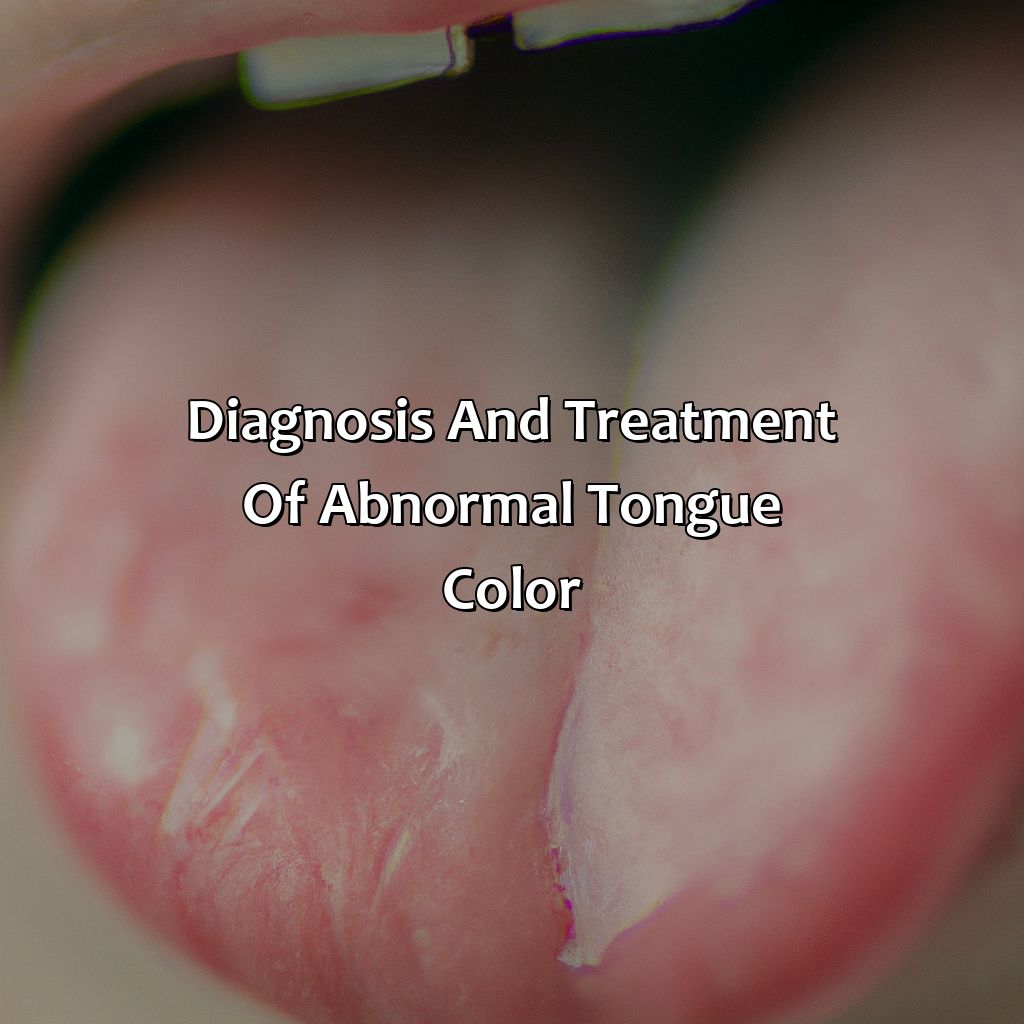
Photo Credits: colorscombo.com by Bobby Sanchez
Diagnosing abnormal tongue colors like red, white and black requires medical evaluation. Learn what different colors indicate in terms of medical conditions. Find out which treatments are best suited. Plus, discover home remedies for discolored tongues. These depend on the cause.
Medical Evaluation
To properly diagnose and treat tongue discoloration, a medical evaluation is necessary. A qualified healthcare professional will examine the tongue’s coloration and take note of any other symptoms present. They may also inquire about medication use, lifestyle habits, and dietary intake. This evaluation will inform an appropriate treatment plan to restore tongue health.
During a tongue color evaluation, the healthcare provider uses their medical knowledge to determine whether the discoloration is due to a benign issue or something more serious. In some cases, further testing may be required to rule out underlying conditions such as vitamin deficiencies or infections. By doing so, the healthcare provider can make an accurate diagnosis and provide the most effective treatment.
It is crucial to take note of any and all symptoms present during a medical evaluation and share them with the healthcare provider for a thorough understanding of the situation. The provider may ask questions about other health concerns that could impact your overall well-being.
To address tongue discoloration that isn’t clinically significant, simple home remedies like oil pulling or brushing can be helpful in restoring normal coloration. More severe cases will require medication or further intervention by a healthcare professional. Ensuring proper hydration, vitamin intake, and good oral hygiene practices can significantly reduce the risk of developing tongue discoloration in the future.
Treatment for your tongue color might include lifestyle changes, medication, or even tongue scraping – just don’t let anyone catch you doing it.
Appropriate Treatment Methods
Addressing the appropriate treatment methods is essential in managing abnormal tongue color. The ideal management plan for discolored tongue depends on the underlying cause and severity. Treatments range from proper hygiene and dietary changes to addressing the condition with medication and invasive procedures.
Depending on the severity of discoloration, it may be necessary to remove any irritants or bacteria that are contributing to the issue. This includes smoking cessation, increasing water consumption, and reducing harmful acidic foods. Oral antifungals or antibiotics may also be used to treat certain infections.
Alternatively, people with deficiencies in important vitamins and minerals must consider supplements or dietary changes.
Furthermore, individuals experiencing prolonged symptoms that have not improved despite home remedies should seek professional medical evaluation for their conditions before undertaking any forms of treatment. A physician can perform a thorough examination to determine the root cause of your tongue discoloration and develop an appropriate plan accordingly.
Ensure you maintain proper oral health by brushing your teeth twice daily, using mouthwash, flossing regularly, staying hydrated all through the day and reducing lifestyle habits like tobacco use.
Not getting prompt attention for your discolored tongue could lead to adverse effects such as painful sores or tumors formation. Therefore, seeking immediate medical advice is crucial in managing this situation before it gets worse.
Time to raid your kitchen cabinets for some DIY tongue detox!
Home Remedies for Discolored Tongue
Tongue discoloration can be a sign of health issues, but there are home remedies available to prevent and treat this problem. Here are some effective techniques using natural materials readily available at home:
- Oil pulling with coconut or sesame oil
- Drinking warm water with lemon juice
- Consuming probiotics such as yogurt and kefir
- Brushing tongue with baking soda and salt paste
- Gargling with saltwater solution or apple cider vinegar diluted in water
These remedies have been used for generations by people worldwide to maintain oral hygiene. Regardless of age and gender, everyone can make use of them for good oral health.
It is important to note that the effectiveness of these remedies depends on the underlying cause of tongue discoloration. Therefore, consulting a dentist or doctor is advisable before practicing them.
As tongue discoloration could indicate more severe medical conditions, seeking appropriate medical attention is necessary if the condition persists despite trying home remedies.
History shows that people used natural materials to maintain oral health in ancient times. In fact, ayurvedic medicine lists several herbs and roots that could help in preventing/treating tongue discoloration. The modern world offers an array of medical products but going back to the roots from time to time seems like a healthier choice overall.
Fight tongue discoloration like a boss with proper oral hygiene – your tongue will thank you.
Prevention of Tongue Discoloration

Photo Credits: colorscombo.com by Keith Wright
Preventing tongue discoloration is key. Good oral hygiene and healthy lifestyle choices are important to promote this. Let’s learn more:
Oral hygiene and its impact on tongue health is essential. Additionally, healthy lifestyle choices can be a great help to keep your tongue healthy.
Proper Oral Hygiene
Maintaining Good Oral Health is the essence of maintaining good overall wellness. A clean mouth and healthy teeth are important for ensuring proper oral hygiene and optimal tongue health.
- Brush your teeth twice a day with fluoridated toothpaste to reduce the risk of cavities.
- Use floss once a day to remove the food particles from between your teeth and gums.
- Use an antiseptic mouthwash after brushing or flossing to kill germs that might cause bad breath and gum diseases.
- Regularly visit a dentist every six months for cleaning, checkups, and professional advice on dental health issues identified through routine check-ups.
It’s also essential to maintain healthy habits like avoiding excessive alcohol consumption, tobacco use, sugary food items.
While we’ve covered the basics of proper oral hygiene above, it’s important that you regularly change your toothbrushes every three months or even as soon as bristles become frayed at the edges as it loses its effectiveness over time.
Pro Tip: Incorporate either tea tree oil or lemon juice onto your brushing routine every week for 2-3 minutes before using your regular toothpaste. The antiseptic properties can help in easing inflammation which is ideal for tongue health.
Choosing a healthy lifestyle not only benefits your body, but also your tongue’s colorful appearance.
Healthy Lifestyle Choices
Leading a healthy lifestyle plays a crucial role in maintaining optimum tongue health. By following appropriate dietary habits, limiting alcohol and tobacco consumption, and practicing good oral hygiene practices, you can significantly reduce the likelihood of developing tongue discoloration. Keeping your body hydrated by drinking an adequate amount of water daily also promotes healthy tongue color.
In addition to these recommendations, it is essential to prioritize physical activity and manage stress levels as part of a healthy lifestyle. Engaging in regular exercise helps increase blood flow and promote healthy circulation, which can have beneficial effects on overall health, including tongue health. Stress management strategies like meditation or deep breathing exercises also aid in promoting overall emotional and physical wellness.
Finally, incorporating plenty of fresh fruits and vegetables into your diet provides the body with essential vitamins and minerals that promote optimal organ function — including the tongue! Fruits and vegetables rich in Vitamin C help maintain collagen production in the mouth while leafy greens promote good digestive health – all indirectly affecting tongue health. Making these sustainable lifestyle changes will not only contribute positively to your current state of well-being but also aid in warding-off potential future illnesses or conditions associated with poor oral health.
5 Facts About What the Color of Your Tongue Means:
- ✅ A white tongue can be a sign of poor oral hygiene, dehydration, or a yeast infection. (Source: Healthline)
- ✅ A red tongue can indicate a vitamin deficiency or inflammation. (Source: Medical News Today)
- ✅ A black, hairy tongue is generally harmless and caused by an overgrowth of bacteria but can be prevented with regular brushing and tongue cleaning. (Source: Mayo Clinic)
- ✅ A yellow tongue can be a sign of dehydration or liver or gallbladder problems. (Source: Medical News Today)
- ✅ A blue tongue can indicate low oxygen levels, which can be a serious medical emergency. (Source: Healthgrades)
FAQs about What Does The Color Of My Tongue Mean
What does it mean if my tongue is white?
A white coating on your tongue can indicate a buildup of bacteria, dead cells, and debris. It may also be a sign of a fungal infection, oral thrush, or a side effect of certain medications.
What does it mean if my tongue is yellow?
A yellow tongue can be caused by a variety of factors including poor oral hygiene, dehydration, smoking, and excessive alcohol consumption.
What does it mean if my tongue is black?
A black tongue can be caused by a buildup of bacteria and debris, or by using certain medications or mouthwashes containing bismuth. In rare cases, it may be a sign of a serious medical condition.
What does it mean if my tongue is red?
A red tongue can be a symptom of a vitamin deficiency, anemia, or a fungal infection. It may also be a sign of an allergic reaction or an autoimmune disorder.
What does it mean if my tongue is blue?
A blue tongue may be a sign of a lack of oxygen, which can be caused by a respiratory or cardiac issue. It can also be a side effect of certain medications.
What does it mean if my tongue is purple?
A purple or bluish-purple tongue can be a sign of a lack of oxygen in the blood. It may also be a symptom of cold and flu, asthma, or heart disease.
